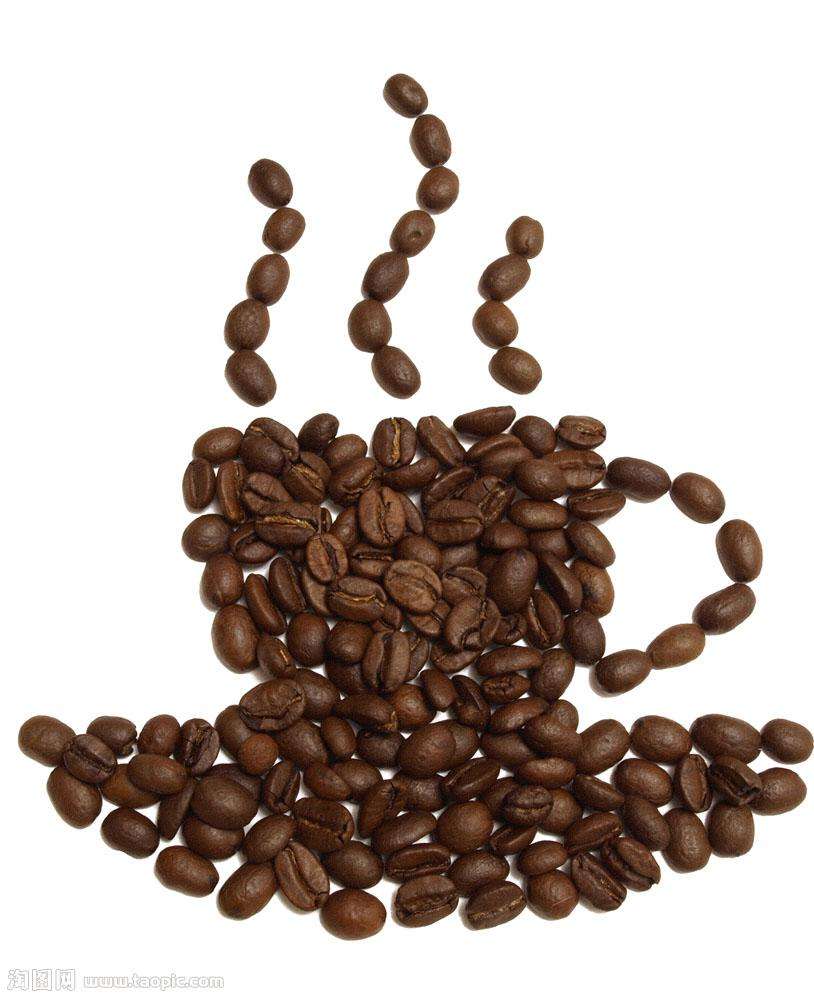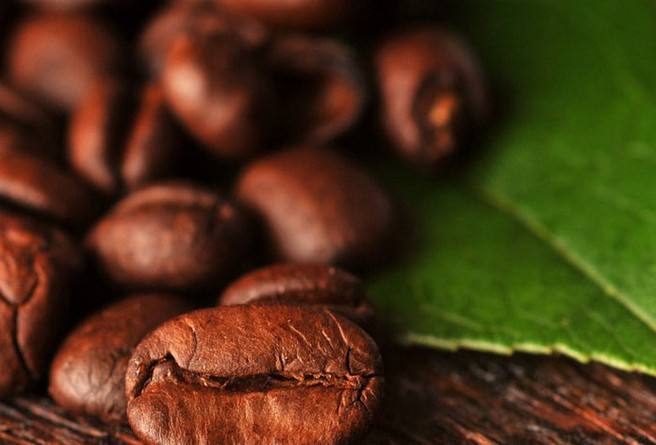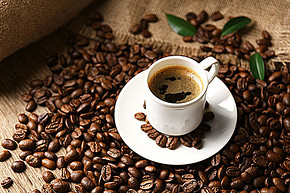Coffee cultivation and development in Cuba
Coffee farming in Cuba
History: Cuba's coffee industry began in the mid-18th century, when the first coffee farm was established by Don Jose é Gelabert in Wajay, on the outskirts of Havana, in 1748. The seeds of coffee came from what was then Santo Domingo, what is now the Dominican Republic. Then a large number of French and undersea immigrants flocked to Cuba after the Sea year Revolution in 1789 to buy land from the Spaniards and grow coffee.
Ripe coffee fruit
The earliest settlers settled in the Sierra Maestra Mountains and the Guantanamo region, where many stone houses were built, which created a unique landscape of coffee cultivation, for which UNESCO listed the provinces of Santiago and Guantanamo in southeastern Cuba as World Heritage sites (World Heritage Site) in 2000.
UN World Heritage site: Cuba's first coffee plantation in the southern Sierra Maestra Mountains, with 317 square miles of existing UN World site: Cuba's first coffee plantation in the southern Sierra Maestra Mountains, with an existing 317 square miles
Cuba has the largest number of abandoned farm sites in the world, which are of high anthropological value, many of which are fully preserved. There are more than 60 in the Las Terrazas area between Havana and Pinar Del Rio. The most representative sites are Buena Vista and Isabelica in the La Union,Sierra Maestra Mountains in Las Terrazas and Don Jos é Gelabert Manor in Wajay.
The Vinales Valley World Heritage site in the Guaniguanico Mountains has a complete underground drainage system. The Vinales Valley World Heritage site, which covers an area of 51 square miles in the Guaniguanico Mountains, has a complete underground drainage system. Covers 51 square miles
The peak of coffee production in Cuba was in the 1950s, when Cuba exported more than 20,000 tons of raw coffee beans a year. After the Cuban revolution in 1959, coffee production in Cuba declined sharply as a result of the dissolution of large farms and the lack of corresponding incentives for small farm production, so Cubans began to add roasted peas to coffee until 2000. Coffee has once again become a ration product for Cubans. But in 2011, the rising price of robusta coffee led to roasted peas added to the coffee. The embargo imposed by the United States on Cuba since 1962 makes Cuban coffee even more rare in the United States and other markets in the world. The collapse of the Soviet Union led to a sharp decline in coffee production in Cuba, from 440000 bags (60 lbs / bag) in 1989-1990 to an all-time low of 7000 in 2007-2008. Since then, Cuban coffee production has hovered around 100000 bags a year.

The production of coffee in Cuba
The production season is from July 1 to June 30 of the following year.
108000 x 60 kg bags
100000 x 60 kg bags
88000 x 60 kg bags
2013: 107000 x 60 kg bags
101000 x 60 kg bags.
Cuba's coffee exports once played an important role, but they are now insignificant in Cuba's foreign trade. Coffee exports throughout the country are under the unified control of the Cuban Export Authority. By the beginning of this century, 92% of Cuba's coffee production was concentrated in the Sierra Maestra mountains, almost entirely under shade cultivation. The harvest season for coffee is from September to January, with peaks in October and November.
Cuba produces Arabica and Robusta coffee, which is mainly produced by small farmers. Cuba has been exporting organic coffee to Europe and Japan since 2003, and currently has 4000 hectares of organically certified plantations, mainly in the centre of the eastern region, producing about 93 tons at a price 40 per cent higher than regular coffee. According to FAO data, coffee cultivation in Cuba fell from 170000 hectares in 1961 to 28000 hectares in 2013.
Cuban coffee is purchased by the Coffee Export Administration from farmers at a uniform price set by the government, mainly to Japan and France, and in small quantities to Germany, the United Kingdom, Canada and New Zealand.
In Cuba, the average coffee supply per person is two ounces per person for 15 days.
Main origin:
Cuba has three main coffee producers: the BAracoa and Sierra Maestra Mountains in eastern Cuba, slopes and valleys at 1000-2000 feet above sea level, the Escambray Mountains in the middle of Cuba, and Sierra del Rosario in the province of Pinar Del Rio in western Cuba.
Variety and grade:
The main varieties of coffee in Cuba are Arabica Typica, Bourbon, red and yellow Caturra, San Ram ó n, Villalobos. The grading of raw coffee beans in Cuba is different from that of other countries in the world, from high to low: Crystal Mountain, Extraturquino, Turquino, Altura, Montana, Cumbre, Serrano superior, Serrano corriente and Caracolillo (oval).
Cuban coffee and Cuban cigars are a perfect match! Cuban coffee and Cuban cigars are a perfect match!
Cuban coffee drinks:
Cuban coffee is thick and sweet, usually made by adding sugar to a deep-roasted, finely ground coffee powder, and it is sweetened before making, usually like Espresso coffee, in a small cup.
Cuban coffee is also known as cafecito, Cuban shot or Cuban pull. Cuban coffee is usually drunk in the morning and after meals, as well as during work breaks.
There are generally the following types of Cuban coffee drinks:
Afecito or Caf é Cubano: this is the most traditional and popular Cuban coffee, ground from ordinary coffee beans and made in a mocha pot or Espresso coffee machine with sugar. It tastes much heavier than American coffee and is drunk in small cups.
Colada: if you want to share your Caf é Cubano with your friends, you can order this. It is a large cup of Caf é Cubano. When it comes up, it will give you a few more cups so that you can share it with your friends.
Coffee é Con Leche: Caf é Cubano, but with a cup of hot steaming milk. Add milk to your coffee before drinking it.
Cortadito: this is Caf é Cubano with a few spoonfuls of steamed milk.
Unlike other coffees, Cuban coffee is made with a special brown sugar called demerara sugar, so Cuban coffee looks heavy. This sugar is added directly to the coffee. In fact, just after the coffee is made, add a little coffee to the cup containing this sugar, then stir quickly until it becomes a thick paste, and then pour all the coffee into the sugar paste to make Cuban coffee.
Drinking coffee is an important part of Cuban culture, and if you visit Cuba, you must try Cuban coffee and Cuban cigars. You're gonna love it.
Current situation and future of the coffee industry in Cuba:
Cuba's coffee industry is tightly controlled by the government and is therefore isolated from other coffee-producing countries. In particular, the embargo imposed by the United States since the 1950s has also made the price of Cuban coffee untouchable, low-key but slightly mysterious. Once the embargo is lifted, the demand for Cuban coffee in the United States market will be very strong, and some non-governmental organizations in the United States will be happy to provide support, so coffee cultivation in Cuba is expected to flourish rapidly.
Coffee has been cultivated in Cuba for more than 200 years. Arabica and Robusta are both grown, and coffee beans are all picked by hand. The tropical climate and rare varieties of the Caribbean Gulf give Cuban coffee a typical exotic island flavor. Strong chocolate and nutty flavors, as well as heavy tobacco flavors.
There are about 1.4 million Cubans in the United States, mainly in and around Miami, so Cuban coffee is very popular in these places, generating more than US $100 million in business each year, but because of the United States embargo on Cuba, these so-called Cuban coffees are made only from Brazilian or Colombian beans and Cuban coffee, not from Cuban beans.
Like other countries where coffee is important (such as Sweden, Turkey, Ethiopia, etc.), Cuban coffee is also an important social tool.
History of Cuba
When Columbus first set foot on Cuba on October 28, 1492, there lived the Siboney, a friendly tribe associated with the Arawa. The colonization of Cuba began in 1511, when the Spanish soldier Diego Vel á zquez founded the town of Baracoa, followed by several other settlements, including Santiago, Cuba, in 1514 and Havana in 1515. In later years, Spaniards explored Mexico and Florida, turning Cuba into a supply base. Due to barbaric treatment and exploitation, the aborigines were nearly extinct in the mid-16th century, forcing Spanish colonists to rely on importing black slaves for the development of mines and plantations.
Streets of Havana
Since the mid-19th century, Cubans began to resist Spanish rule and demanded independence. After the two wars of independence at the end of the 19th century, the United States occupied Cuba, and in the following half a century, the United States controlled Cuba through a puppet government, so Cuba was once known as "the back garden of Americans". At that time, the capital Havana was a bustling metropolis, full of neon lights and partying every night. It was not until 1959 that Castro led the nationalization of property after the victory of the Cuban revolution, forcing the rich to flee Cuba, leaving only the real estate that could not be taken away and the old cars still running through the streets of Cuba.
Cafes on the streets of Cuba
The economic blockade that has lasted for more than half a century began after the failure of American mercenaries to attack Cuba in 1961. Decades of embargo have kept the country unchanged for many years, and Cuba's mystery and Caribbean customs attract tourists from all over the world. The old city of Havana, the colonial style of Trinidad and Santiago, vintage cars running all over the street, the resort beach of Paradero, Che Guevara, Hemingway, Latin music, cigars and rum are all business cards of Cuba.
Colorful vintage cars on the streets of Havana
Cuba is an archipelago country in the northern part of the Calabi Sea in the Americas. The two main islands are Cuba and Youth Island. The other islands have about 4195 islands, large and small. Cuba is just south of Florida! As long as the Cubans set foot on the land of the United States in any way, the United States will accept all of them and give them identity immediately! Now in Miami, Florida, there are many Cubans. Miami is called "Little Havana" by the locals.
Important Notice :
前街咖啡 FrontStreet Coffee has moved to new addredd:
FrontStreet Coffee Address: 315,Donghua East Road,GuangZhou
Tel:020 38364473
- Prev

Cuban Crystal Mountain Coffee: with wine-like bitterness and light sweetness
Following Cafe Review (Wechat official account vdailycom) found that the beautiful cafe opened its own shop, Cuban Crystal Mountain Coffee (Cubita Coffee), which has a slightly wine-like bitterness and a hint of sweetness, and even a hint of tobacco, delicate and smooth, refreshing and elegant, almost perfect. Known as the noble and elegant princess in coffee. General coffee tastes like heavy metal
- Next

Cuban Crystal Mountain Coffee: only make individual Coffee
Cubita is produced in coffee from the pollution-free Crystal Mountain in the high altitude of Cuba, which is adjacent to the Blue Mountain Mountains of Jamaica and has similar climatic conditions, comparable to Jamaican Blue Mountain Coffee. Crystal Mountain is also known as the Blue Mountain of Cuba. So there are a lot of coffee under the banner of the Cuban Blue Mountains, but the purest Crystal Mountain Coffee Cubita is allowed to use Cuban water.
Related
- Detailed explanation of Jadeite planting Land in Panamanian Jadeite Manor introduction to the grading system of Jadeite competitive bidding, Red bid, Green bid and Rose Summer
- Story of Coffee planting in Brenka region of Costa Rica Stonehenge Manor anaerobic heavy honey treatment of flavor mouth
- What's on the barrel of Blue Mountain Coffee beans?
- Can American coffee also pull flowers? How to use hot American style to pull out a good-looking pattern?
- Can you make a cold extract with coffee beans? What is the right proportion for cold-extracted coffee formula?
- Indonesian PWN Gold Mandrine Coffee Origin Features Flavor How to Chong? Mandolin coffee is American.
- A brief introduction to the flavor characteristics of Brazilian yellow bourbon coffee beans
- What is the effect of different water quality on the flavor of cold-extracted coffee? What kind of water is best for brewing coffee?
- Why do you think of Rose Summer whenever you mention Panamanian coffee?
- Introduction to the characteristics of authentic blue mountain coffee bean producing areas? What is the CIB Coffee Authority in Jamaica?

